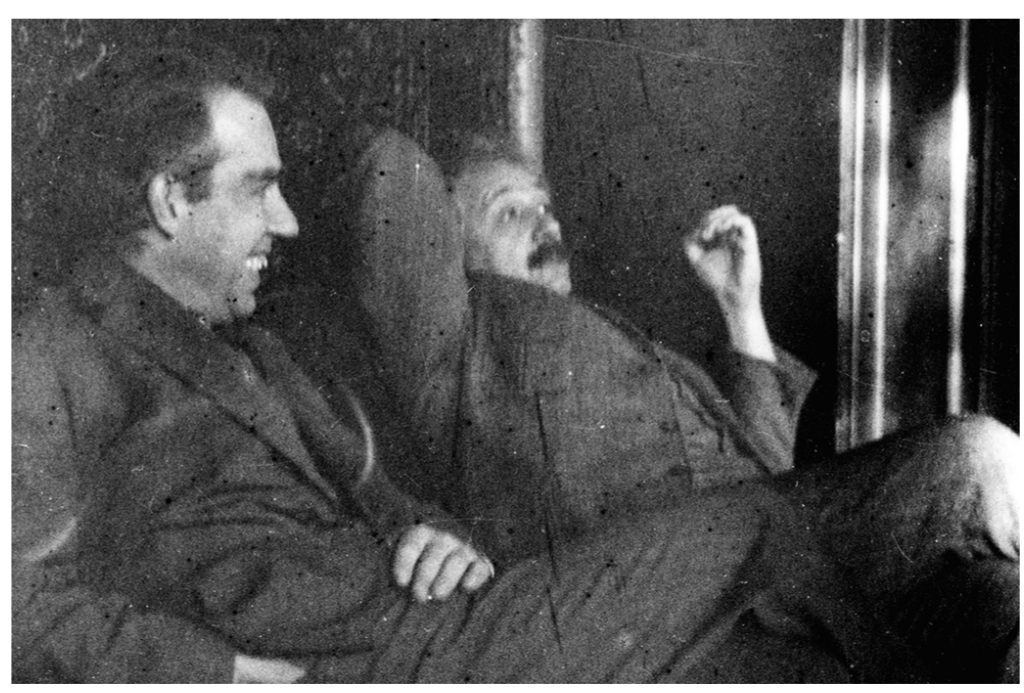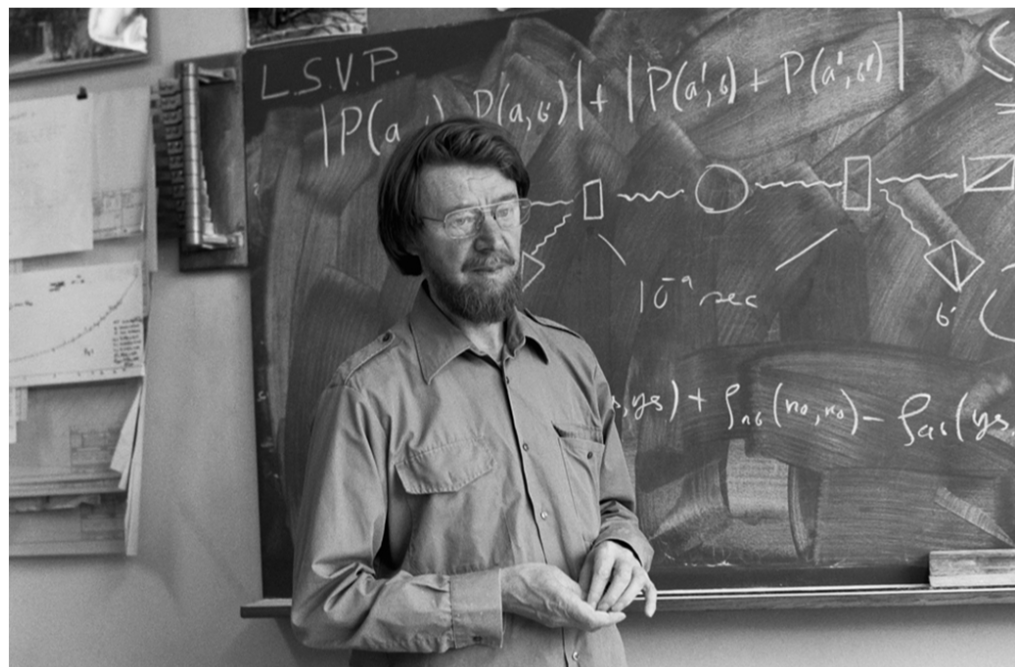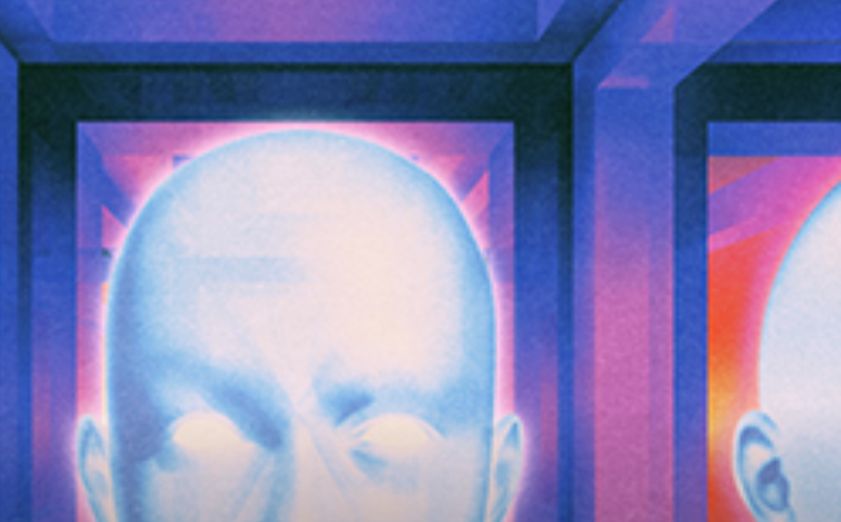Rethinking reality
Scientists are like prospectors, excavating the natural world seeking gems of knowledge about physical reality. And in the century just past, scientists have dug deep enough to discover that reality’s foundations do not mirror the world of everyday appearances. At its roots, reality is described by the mysterious set of mathematical rules known as quantum mechanics.
Conceived at the turn of the 20th century and then emerging in its full form in the mid-1920s, quantum mechanics is the math that explains matter. It’s the theory for describing the physics of the microworld, where atoms and molecules interact to generate the world of human experience. And it’s at the heart of everything that made the century just past so dramatically unlike the century preceding it. From cell phones to supercomputers, DVDs to pdfs, quantum physics fueled the present-day electronics-based economy, transforming commerce, communication and entertainment.
But quantum theory taught scientists much more than how to make computer chips. It taught that reality isn’t what it seems.

“The fundamental nature of reality could be radically different from our familiar world of objects moving around in space and interacting with each other,” physicist Sean Carroll suggested in a recent tweet. “We shouldn’t fool ourselves into mistaking the world as we experience it for the world as it really is.”
In a technical paper backing up his tweet, Carroll notes that quantum theory consists of equations that describe mathematical entities roaming through an abstract realm of possible natural events. It’s plausible, Carroll argues, that this quantum realm of mathematical possibilities represents the true, fundamental nature of reality. If so, all the physical phenomena we perceive are just a “higher-level emergent description” of what’s really going on.
“We shouldn’t fool ourselves into mistaking the world as we experience it for the world as it really is.”
Sean Carroll.
“Emergent” events in ordinary space are real in their own way, just not fundamental, Carroll allows. Belief that the “spatial arena” is fundamental “is more a matter of convenience and convention than one of principle,” he says.
Carroll’s perspective is not the only way of viewing the meaning of quantum math, he acknowledges, and it is not fully shared by most physicists. But everybody does agree that quantum physics has drastically remodeled humankind’s understanding of nature. In fact, a fair reading of history suggests that quantum theory is the most dramatic shift in science’s conception of reality since the ancient Greeks deposed mythological explanations of natural phenomena in favor of logic and reason. After all, quantum physics itself seems to defy logic and reason.
It doesn’t, of course. Quantum theory represents the ultimate outcome of superior logical reasoning, arriving at truths that could never be discovered merely by observing the visible world.

It turns out that in the microworld — beyond the reach of the senses — phenomena play a game with fantastical rules. Matter’s basic particles are not tiny rocks, but more like ghostly waves that maintain multiple possible futures until forced to assume the subatomic equivalent of substance. As a result, quantum math does not describe a relentless cause-and-effect sequence of events as Newtonian science had insisted. Instead science morphs from dictator to oddsmaker; quantum math tells only probabilities for different possible outcomes. Some uncertainty always remains. Tom Siegfried.

Quantum mechanics says that whether an electron behaves as particle or wave depends on how it is observed. MAX LÖFFLER.
Uncertainty reigns.
The discovery of quantum uncertainty was what first impressed the world with the depth of the quantum revolution. German physicist Werner Heisenberg, in 1927, astounded the scientific community with the revelation that deterministic cause-and-effect physics failed when applied to atoms. It was impossible, Heisenberg deduced, to measure both the location and velocity of a subatomic particle at the same time. If you measured one precisely, some uncertainty remained for the other.
“A particle may have an exact place or an exact speed, but it can not have both,” as Science News Letter, the predecessor of Science News, reported in 1929. “Crudely stated, the new theory holds that chance rules the physical world.” Heisenberg’s uncertainty principle “is destined to revolutionize the ideas of the universe held by scientists and laymen to an even greater extent than Einstein’s relativity.”
Heisenberg’s breakthrough was the culmination of a series of quantum surprises. First came German physicist Max Planck’s discovery, in 1900, that light and other forms of radiation could be absorbed or emitted only in discrete packets, which Planck called quanta. A few years later Albert Einstein argued that light also traveled through space as packets, or particles, later called photons. Many physicists dismissed such early quantum clues as inconsequential. But in 1913, the Danish physicist Niels Bohr used quantum theory to explain the structure of the atom. Soon the world realized that reality needed reexamining.
Illustration cover photo by Max Loffler. Factual Article written by, Tom Siegfried. Courtesy, Science News. Thanks.

